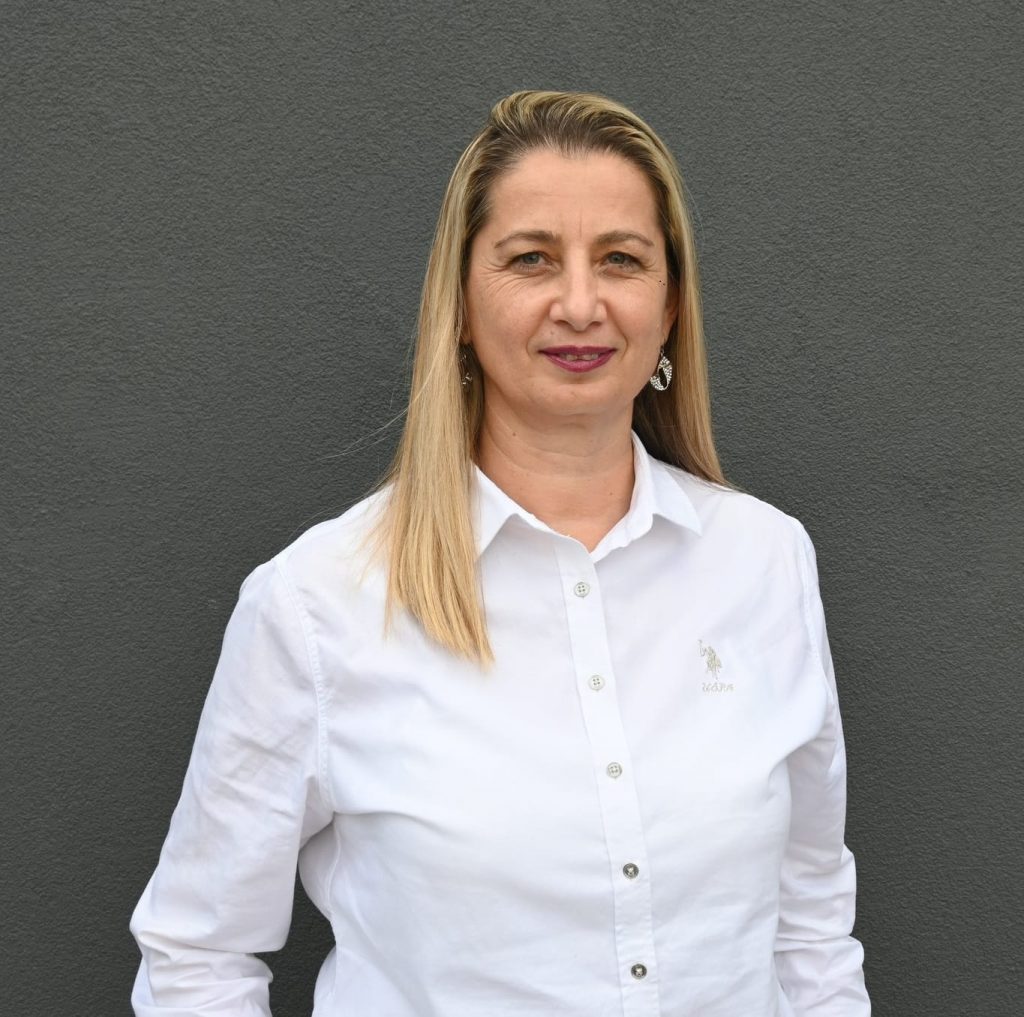During last year’s local election campaign held in May, Prime Minister Rama announced the ambition for Albania to reach an income of 10 thousand Euros per capita by 2030. Verification reveals that appealing figures don’t necessarily lead to prosperity, especially considering the inflation that has reached its peaks. Over the past decade, 65% of the increase in per capita income has gone towards servicing public debt, yet the ‘Devil’ hides within the details that electoral propaganda decorates. One of the scenarios for achieving the objective of 10 thousand Euros per capita by 2030 involves a decrease in the population, which continues due to migration and currency devaluation, a scenario not very optimistic for Albania.
Marjo Brakaj
‘My ambition is to definitely achieve a minimum wage of 60 thousand ALL and per capita income of 10 thousand Euros. This is the top I envision for Albania by 2030‘. – Prime Minister Rama stated on April 25, 2023, in Patos during the local election campaign.
Prime Minister Edi Rama openly expressed his ambition to increase per capita income, even in the presence of the World Bank’s representative in Albania, Emanuel Salinas, on April 4, 2023.
‘Consider that per capita income in Albania has increased from 3,300 Euro when we assumed office to 6,190 Euros today. That’s an 87.5% increase, nearly doubling,’ – Prime Minister Rama argued.
The flip side of the ‘doubling income per capita’ medal
The total value of products and services produced in the country during 2022, when converted to currency, reached 19.9 billion Euro. During that period, based on official INSTAT figures, Albania had a population of 2.8 million residents.
The average income per capita is calculated as the ratio between Gross Domestic Product (GDP) and the population. In 2022, the average income per capita in Albania was 6,443 Euros. Per capita incomes have nearly doubled compared to 2013.

The trend of per capita income (in euros)
Source: Ministry of Finance
On the other hand, data from the Ministry of Finance indicates that, from around 9 billion Euros in 2013, the stock of public debt reached nearly 14 billion Euros by the end of 2022. Comparing the figures of the two years a decade apart, we see that from less than 2,500 Euros, per capita debt reached 4,116 Euros by the end of 2022, marking an increase of 64 percent.

Per capita debt (in euros)
Source: Ministry of Finance
‘Taking into account Prime Minister Rama’s statements and data from institutions, it is indeed true that per capita incomes are increased by 87.5 percent during the 2013-2022 timeframe. However, on the flip side, per capita debt is also increased by almost 65 percent. Considering both sides of the medal, it turns out that the net expansion of per capita incomes over a decade is only 22.5 percent‘, explains the Accounting Expert, Eduart Gjokutaj.
Per capita income figures are being used for propaganda purposes
‘If I eat two chickens and you eat none, on average, we each have eaten one chicken.’ This statement illustrates what is commonly expressed by public institutions as ‘average’. So, indeed, on average, an Albanian had 6,433 Euros of income per capita by the end of 2022, but the actual distribution of these funds is more important.
‘Let’s stop at the mentality that ‘the devil is in the details.” So, we could have good economic growth, but as it currently stands, in a comparative manner, the world’s 8 wealthiest billionaires own as much wealth as 3.5 billion people. This could also happen in Albania, in the economic model that has been chosen, where money is concentrated in a few hands, in a few companies,’ argues former Finance Minister Arben Malaj.
To further elaborate on the ‘average’ arguments, we need only to refer to the data from the Deposit Insurance Agency. For 2022, it was found that 4.4 percent of individuals held nearly 60 percent of the deposits in the country, while nearly 900 thousand bank accounts were empty.

Allocation of insured deposits for 2022 (ASD)
Individuals with over 2.5 million ALL
Individuals with less than 2.5 million ALL
Economic growth doesn’t always mean greater prosperity
When a country’s economy grows, this naturally translates into increased prosperity for its people. This is a thesis already widely accepted in the vast majority of economies worldwide. However, the analysis of the figures indicates that economic growth in Albania is not resulting in increased prosperity for families and individuals.
The year 2022 (data for 2023 is not yet complete) was good for the state treasury, but not as much for the budgets of Albanian families.
During a time when economic growth was nearly 5 percent, monthly expenditures of families only expanded by 4.5 percent compared to 2021. Translated into currency, that’s an additional 3,819 ALL per month. A 4.5% increase in household spending while the economy grows by nearly 5% would be good news. However, this cannot be said for Albania, at least for the past year. Inflation, the indicator of currency devaluation against rising prices, reached its highest level since 1998, averaging 6.7 percent.
‘Families didn’t exactly have more money in their pockets; rather, expenses increased due to inflation. Therefore, it appears that Albanians experienced a worse standard of living in 2022 compared to 2021. In short, as prices increased, Albanians bought fewer goods and services in 2022 compared to 2021‘, argues former Finance Minister Arben Malaj.
‘All in’ for sustenance
Almost 40 percent of the expenses of an Albanian family in 2022 were allocated to food. In the countries of the region, this indicator does not exceed 27 percent, while in the European Union, it’s only 15 percent.
The high proportion of expenditure on food compared to the total does not imply that Albanians eat better than citizens of other European or regional countries.
‘This happens for two reasons. First, low incomes. Given the low wages, a significant portion of them inevitably goes towards food. Secondly, in Albania, food prices are considerably higher than in European Union countries‘, explains the Economist, Teuta Nunaj.
Inflation continues to eat away at per capita income.
‘Faktoje’ questioned several citizens about how their lives have evolved in the past 10 years.

‘I’ve been working as a nurse for almost 20 years. I used to have a salary of 44,000 ALL, and now I have 47,000 ALL. Three thousand ALL more in 10 years. Let’s do the math. How much have prices increased? Ten years ago, you could buy something at supermarkets with 500 ALL. Today, you can’t even get close because that amount of money ALL is not worth anything‘ – the nurse Teuta Bregasi told ‘Faktoje’.
Pensioners have felt the increase in per capita income even less.
‘My pension has increased by 2,000 ALL over 10 years, which is 200 ALL more per year. What else can I say! Age advances, illnesses increase, and expenses grow. Many things are said in the air, but we don’t see any change!’ – complains Rauf Prifti, a 79-year-old pensioner living in Tirana.
Albania’s economic growth resources are diminishing.
Meanwhile, agriculture, the sector that sustains and employs nearly half of the population, had a negative contribution to economic growth during the past year. Put simply, if in 2022 agriculture’s output was valued at 100,000 ALL, in 2023 it was worth 99,997 ALL.
‘When discussing economic growth, it’s important to consider the numerous debates and discussions of an economic, financial, and social nature. These discussions do not portray it as a magic stick that solves everything. It is recommended that these discussions always be accompanied by questions and conclusions such as: at what level does economic growth translate into economic and social development, and how does it translate into well-being and progress? Are we dealing with quantitative or qualitative economic growth? How does economic growth affect sustainable development? – says Economics expert Eduart Gjokutaj.
We are 40 years behind compared to the economies of EU countries
According to the World Bank, with an average economic growth of 4 percent, Albania would need around 36 years to reach the average per capita income of EU countries. If this trend continues until the first half of the year, the country will need more than four decades to achieve this goal.
‘Three decades are sufficient to no longer lag behind in Europe in terms of per capita income. The justifications don’t hold up! Albania has abundant natural resources from air, sea, and land that should lead to a prosperity trajectory at least higher than that of other countries in the region. And let’s not forget the human capacities here, which are growing and strengthening, and which clearly compete strongly with the capacities of the region.’ – Gjokutaj argues.
The need for a new economic model
‘Faktoje’ inquired and received responses from the International Monetary Fund and the World Bank regarding the path Albania should take to achieve economic growth that translates into prosperity for its citizens.
Referring to Article IV consultations with Albania, the IMF assesses: ‘As the country is on the path to EU accession, authorities are facing several obstacles that are affecting productivity and the attainment of higher living standards.
The IMF recommends a comprehensive fiscal consolidation based on revenue growth, starting from 2024. This would be essential to build fiscal space for future countercyclical policy. Cumulative additional fiscal measures of about 1½ percent of GDP would lead to a faster reduction in debt and reduce the need for gross financing.
Meanwhile, the World Bank emphasizes human capital and diversifying sources of economic growth.
‘To pass the challenging days ahead as smoothly as possible, Albania should undertake structural reforms, control public debt, attract more investments, and enhance productivity in the labor market.’
These are some of the recommendations of the World Bank, with a primary focus on maintaining human resources and investing in technology to better cope with the economic crisis that is expected to impact everyone, Albania included.
‘The recent economic growth has not been allocated fairly among social groups. As a result, we see that the unemployment rate is approximately 11 percent. This indicator reflects poverty and the need for more assistance from the state. This is because the majority of those seeking social assistance receive more money from the budget. Both the World Bank and all institutions have emphasized that the social protection scheme is not effective and needs to be reviewed to achieve ‘economic dignity’. – argues the Former Finance Minister Arben Malaj.
Referring to official data from Albanian institutions, foreign sources, and the arguments of economic experts, it can be said about the ‘10,000 Euro per capita’ goal announced by the prime minister: ‘Per capita income in 2030 could reach 10,000 Euro if migration rates continue at the same pace, along with the ‘superlek’ (super Albanian Lek) which continues to remain strong. Per capita income is calculated as the ratio of total GDP in a year to the population, and when the population decreases, per capita income increases. Also, when the currency depreciates, consequently, fewer LEK (Albanian Lek) are worth more, – argues the Economics Expert, Teuta Nunaj.
However, achieving the objective from these two scenarios would be just bad news that would not make anyone feel proud of ‘fulfilling promises.’ Beware of propaganda with numbers!






